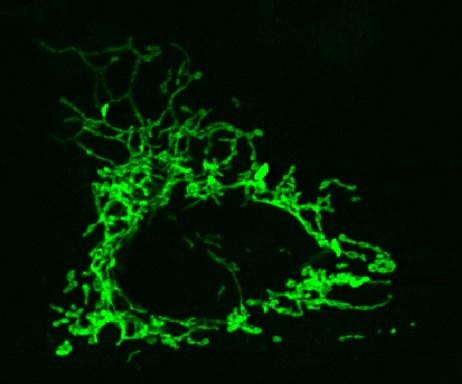Reversing the signs of Alzheimer’s
Scottish scientists are one step further to finding a cure for Alzheimer’s, thanks to the development of a compound which reverses signs of the disease.
The biologists at the University of St Andrews have developed man-made compounds capable of blocking a nerve cell interaction known to lead to the symptoms of the disease. The researchers have shown that it is possible to reverse some of the signs associated with Alzheimer’s.
 Dr Frank Gunn-Moore’s team, in collaboration with researchers in the US, have successfully reversed a sign for the progression of the disease and prevented the death of brain cells. This subsequently leads to improved memory and learning ability that was already damaged.
Dr Frank Gunn-Moore’s team, in collaboration with researchers in the US, have successfully reversed a sign for the progression of the disease and prevented the death of brain cells. This subsequently leads to improved memory and learning ability that was already damaged.
The results of the recent study – carried out in the lab using a model of the disease – has been described as ‘exciting’ by the Alzheimer’s Research Trust, who helped to fund the research.
Alzheimer’s affects around half a million people in the UK – a number which is expected to double with the general aging of the population over the next generation. The discovery that Alzheimer’s is caused by a toxic protein which kills off nerve cells in the brains of sufferers, has led to the search for a compound which can block or reduce the debilitating interaction.
Alzheimer’s is linked to the build up of amyloid protein which eventually forms ‘senile plaques’. The amyloid protein inflicts damage by interacting with an enzyme called ABAD (Amyloid Beta Alcohol Dehydrogenase) and releasing toxic substances which kill brain cells.
Dr Gunn-Moore’s research initially focussed on developing the three-dimensional shape of ABAD and understanding how amyloid attaches itself to the structure.
Dr Gunn-Moore, a senior lecturer at the University’s School of Biology said, “Alzheimer’s sufferers produce too much amyloid and ABAD in their brains. Based on our knowledge of ABAD, we produced an inhibitor that can prevent amyloid attaching to it in a living model. We have shown that it is possible to reverse some of the signs associated with Alzheimer’s disease.
“The work is now being continued to try and refine the inhibitor into a potential drug. Our research holds a possible key for the treatment of Alzheimer’s disease, particularly in its early stages.”

The Alzheimer’s Research Trust have awarded the St Andrews team a further grant to develop the research over the next three years – the funding will allow PhD researcher Kirsty Muirhead to build on the success of recent results. Kirsty aims to find and test other compounds in order to find the inhibitor with the greatest potential for use in future therapies.
Rebecca Wood, Chief Executive of the Alzheimer’s Research Trust, said, “A drug that can stop Alzheimer’s disease from killing brain cells is a holy grail for researchers working to overcome the devastating condition which affects more than 500,000 people in the UK. We wish Dr Gunn-Moore and his team well in this exciting research.”
ENDS
NOTE TO EDITORS:
DR GUNN-MOORE IS AVAILABLE FOR INTERVIEW TODAY ON 01334 463525
NOTE TO PICTURE EDITORS:
IMAGES RELATING TO THE RESEARCH ARE AVAILABLE FROM THE PRESS OFFICE – CONTACTS BELOW.
Issued by Press Office, University of St Andrews
Contact Gayle Cook, Press Officer on 01334 467227 / 462529, mobile 07900 050 103, or email [email protected]
Ref: Alzheimers 230707
View the latest University press releases at www.st-andrews.ac.uk
Category Research